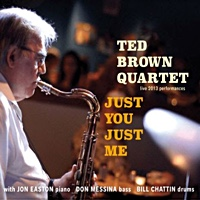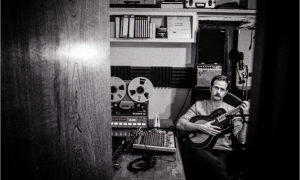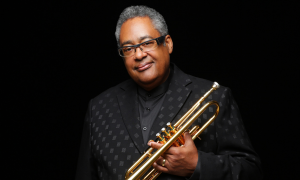One of the most engaging trends in Latin Jazz over the past decade has been the growth in visibility and prominence of Afro-Peruvian Jazz. While musicians have flirted with the style for several years, the use of Afro-Peruvian rhythms in a jazz setting has become a noticeable part of the scene in the new millennium. In an insightful guest post, film producer Eve A. Ma discusses Afro-Peruvian Jazz and some of the musicians that have made an impact upon the style. Ma will be releasing an independent documentary in 2012 that digs deeply into the traditional side of the music—it sounds like a must see, so check out the links to this great documentary on Afro-Peruvian music.
Afro-Peruvian jazz is part and parcel of Latin jazz, a mixture of traditional Afro-Peruvian rhythms and inclination to improvise, with the New York jazz scene of the 1980s and beyond.
Guitarist Richard Zellon is generally credited with introducing Afro-Peruvian jazz to the United States. Another important figure is trumpet player Gabriel Alegria. Both of these, as well as most other musicians playing Afro-Peruvian jazz, are Peruvian but not Afro-Peruvian.
For Afro-Peruvians involved in jazz, you would want to look at the singers Susana Baca and Eva Ayllón.
But maybe we should start at the beginning.
Most people agree that jazz is a musical form that grew out of the experience of Africans in America, an experience that included slavery, discrimination and other hardships; but in contrast to the blues, jazz has a generally optimistic outlook on life. It is vibrant. It is often joyful. It is fun.
In addition, rhythm and improvisation are key elements in jazz. And if you accept that jazz grew in large part out of the black experience, then it´s clear a lot of those rhythms came from Africa.
Originally, jazz was considered something that “belonged" to the United States. It was thought of as being an “American" form of music, where “American" referred to the United States of America.
But since the late 1940s, when Dizzy Gillespie, working with Chano Pozo and Mario Bauza, introduced the world to Afro-Cuban jazz, jazz became more international. More and more musicians began combining the sound and rhythms of traditional Latin American beats with (North) American jazz. Afro-Cuban jazz was soon joined by Cuban jazz, Puerto Rican jazz, Afro-Brazilian jazz, and then Afro-Peruvian jazz. All of these taken together are what is now known as Latin jazz.
Again, each one of these forms of Latin jazz seem to have started when musicians from Latin American countries came to New York and started making music with New York musicians, transforming their traditional music into a new form of jazz.
Thus it was that in the 1980s and especially after the year 2000, Peruvian musicians in New York began developing Afro-Peruvian jazz out of Afro-Peruvian traditional music. This Afro-Peruvian traditional music is lively, has complex rhythms, allows for improvisational riffs, and has contributed several important percussion instruments to the world, including the quijada de burro (donkey´s jawbone) and the Peruvian cajón (as distinguished from the Cuban cajón).
I find it fascinating that the musicians who are the major proponents of Afro-Peruvian jazz are not themselves black. As noted above, they are usually Peruvian, but not Afro-Peruvian.
This is not true of singers, however. Several well-known singers from the Afro-Peruvian community who were brought up with their traditional songs have now begun to include jazz in their repertoire. These include most importantly the women we mentioned above, Susana Baca (who is not only a fine and well-known singer, but also since summer of 2011 is the Minister of Culture of Peru) and Eva Ayllón (lead singer of Perú Negro, one of the oldest and most prestigious Afro-Peruvian performing groups).
A few words here about traditional Afro-Peruvian music, and the dances that accompany it. Some of these numbers are over 300 years old. They show a community that was resourceful in the face of adversity, able to bear up under extreme hardship in part by making fun of the white Spanish masters who were treating them so cruelly.
In addition, the original Afro-Peruvians developed a form of footwork, or zapateo, that used the feet as a percussive instrument. The zapateo began in dances related to Christian celebrations and had its origin in the process by which Spaniards converted Africans to Christianity—teaching Spanish footwork which the Africans then combined with their own footwork styles, footwork they used to communicate with Mother Nature.
The connection between Afro-Peruvian jazz and Afro-Peruvian traditional music is important, and the traditional music deserves to be more widely known in the United States. It is also important to maintain the traditional music and dances, both because of their intrinsic value, and because they are a source of inspiration and an essential element in the richness of Afro-Peruvian jazz.
Afro-Peruvian jazz is part and parcel of Latin jazz, a mixture of traditional Afro-Peruvian rhythms and inclination to improvise, with the New York jazz scene of the 1980s and beyond.
Guitarist Richard Zellon is generally credited with introducing Afro-Peruvian jazz to the United States. Another important figure is trumpet player Gabriel Alegria. Both of these, as well as most other musicians playing Afro-Peruvian jazz, are Peruvian but not Afro-Peruvian.
For Afro-Peruvians involved in jazz, you would want to look at the singers Susana Baca and Eva Ayllón.
But maybe we should start at the beginning.
Most people agree that jazz is a musical form that grew out of the experience of Africans in America, an experience that included slavery, discrimination and other hardships; but in contrast to the blues, jazz has a generally optimistic outlook on life. It is vibrant. It is often joyful. It is fun.
In addition, rhythm and improvisation are key elements in jazz. And if you accept that jazz grew in large part out of the black experience, then it´s clear a lot of those rhythms came from Africa.
Originally, jazz was considered something that “belonged" to the United States. It was thought of as being an “American" form of music, where “American" referred to the United States of America.
But since the late 1940s, when Dizzy Gillespie, working with Chano Pozo and Mario Bauza, introduced the world to Afro-Cuban jazz, jazz became more international. More and more musicians began combining the sound and rhythms of traditional Latin American beats with (North) American jazz. Afro-Cuban jazz was soon joined by Cuban jazz, Puerto Rican jazz, Afro-Brazilian jazz, and then Afro-Peruvian jazz. All of these taken together are what is now known as Latin jazz.
Again, each one of these forms of Latin jazz seem to have started when musicians from Latin American countries came to New York and started making music with New York musicians, transforming their traditional music into a new form of jazz.
Thus it was that in the 1980s and especially after the year 2000, Peruvian musicians in New York began developing Afro-Peruvian jazz out of Afro-Peruvian traditional music. This Afro-Peruvian traditional music is lively, has complex rhythms, allows for improvisational riffs, and has contributed several important percussion instruments to the world, including the quijada de burro (donkey´s jawbone) and the Peruvian cajón (as distinguished from the Cuban cajón).
I find it fascinating that the musicians who are the major proponents of Afro-Peruvian jazz are not themselves black. As noted above, they are usually Peruvian, but not Afro-Peruvian.
This is not true of singers, however. Several well-known singers from the Afro-Peruvian community who were brought up with their traditional songs have now begun to include jazz in their repertoire. These include most importantly the women we mentioned above, Susana Baca (who is not only a fine and well-known singer, but also since summer of 2011 is the Minister of Culture of Peru) and Eva Ayllón (lead singer of Perú Negro, one of the oldest and most prestigious Afro-Peruvian performing groups).
A few words here about traditional Afro-Peruvian music, and the dances that accompany it. Some of these numbers are over 300 years old. They show a community that was resourceful in the face of adversity, able to bear up under extreme hardship in part by making fun of the white Spanish masters who were treating them so cruelly.
In addition, the original Afro-Peruvians developed a form of footwork, or zapateo, that used the feet as a percussive instrument. The zapateo began in dances related to Christian celebrations and had its origin in the process by which Spaniards converted Africans to Christianity—teaching Spanish footwork which the Africans then combined with their own footwork styles, footwork they used to communicate with Mother Nature.
The connection between Afro-Peruvian jazz and Afro-Peruvian traditional music is important, and the traditional music deserves to be more widely known in the United States. It is also important to maintain the traditional music and dances, both because of their intrinsic value, and because they are a source of inspiration and an essential element in the richness of Afro-Peruvian jazz.

























